Several Methods to Improve the Grinding Efficiency of Ball Mill
The low grinding efficiency of the ball mill, low processing capacity, high production energy consumption, and unstable product fineness are the problems that most concentrators will encounter. How to effectively improve the grinding efficiency of the ball mill is an important issue.
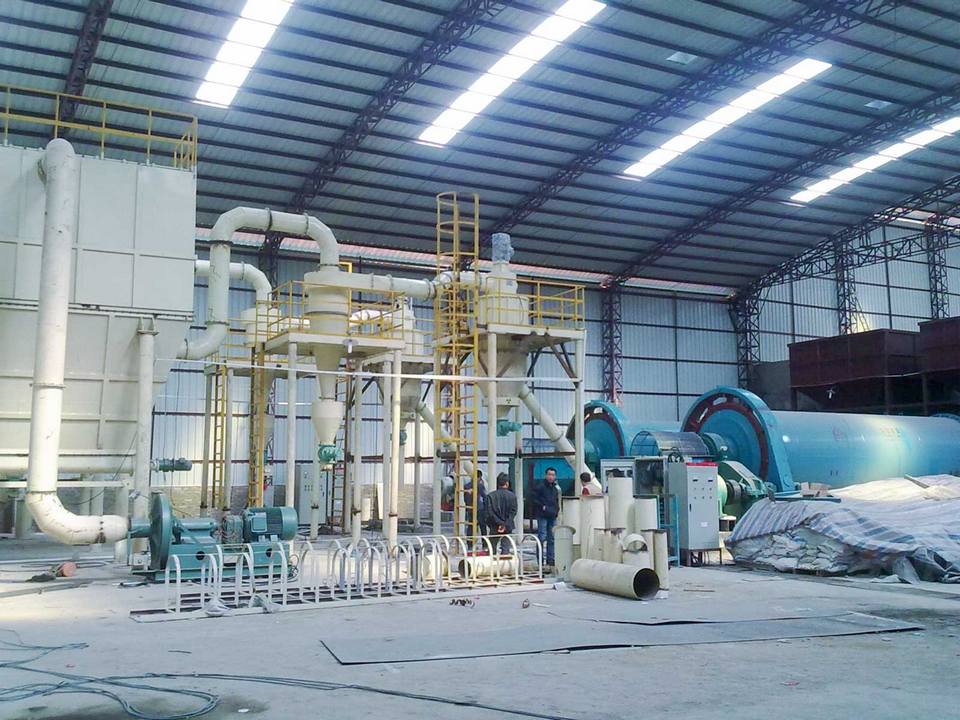
- Change the grindability of raw ore
The hardness, toughness, dissociation and structural defects of the original ore determine the difficulty of grinding. If the hardness is small, the ore is easy to grind, the wear of the mill liner and the steel ball is small, and the energy consumption is small; otherwise, the situation is just the opposite. The nature of the original ore directly affects the productivity of the factory.
In production, if it is difficult to grind ores or needs to be finely ground, if economic and on-site conditions permit, a new treatment process can be used to change the grindability of the ore:
One method is to add some chemicals in the grinding process to improve the grinding effect and improve the grinding efficiency.
Another method is to change the grindability of the ore, such as heating the minerals in the ore, changing the mechanical properties of the entire ore, and reducing the hardness.
- More crushing and less grinding to reduce the grinding particle size
If the grinding particle size is large, the mill needs to perform more work on the ore. In order to achieve the required grinding fineness, the workload of the ball mill is bound to increase, so energy consumption and power consumption will also increase.
In order to reduce the size of the grinding feed, it is required that the particle size of the pulverized product should be small, that is, "more pulverize and less grind". Moreover, the grinding efficiency is significantly higher than the grinding efficiency, and the grinding energy consumption is relatively low, about 12%-25% of the grinding energy consumption.
- Reasonable filling rate
When the speed of the ball mill is fixed and the filling rate is large, the steel ball will hit the material many times, the grinding area is large, the grinding effect is strong, but the power consumption is also large. The filling rate is high, which is easy to change the motion state of the steel ball and reduce the impact effect on the large particle material. On the contrary, the filling rate is too small, and the grinding effect is poor.
At present, many mines set the filling rate to 45%~50%, which is not necessarily strictly reasonable, because the actual conditions of each beneficiation plant are different. Copying the ball load data of others cannot achieve the ideal grinding effect. It should be determined according to the situation. .
- Reasonable ball size and proportion
Due to the point contact between the steel ball and the ore in the ball mill, if the diameter of the ball is too large, the crushing force is also great, causing the ore to break along the direction of the penetration force instead of along the interface. Crushing is not selective and cannot meet the purpose of grinding.
In addition, in the case of the same steel ball filling rate, the steel ball diameter is too large, resulting in too few steel balls, the possibility of crushing is low, the phenomenon of excessive crushing is aggravated, and the product particle size is uneven. Because the ball is too small, the crushing force on the ore is small, and the grinding efficiency is low. Therefore, the correct ball size and ratio have an important influence on the grinding efficiency.
Application of Ultra-fine Grinding Technology in Food Processing
Ultra-fine grinding technology is a new technology developed in the past 20 years. The so-called ultra-fine grinding refers to the use of mechanical or hydrodynamic methods to overcome the internal cohesive force of solids to grind them, thereby grinding the material particles of more than 3 mm to 10-25 microns. A material processing high-tech produced by the development of high-tech. Ultra-fine powder is the final product of ultra-fine grinding. It has special physical and chemical properties that ordinary particles do not have, such as good solubility, dispersibility, adsorption, and chemical reaction activity. Therefore, ultra-fine powders have been widely used in many fields such as food, chemicals, medicine, cosmetics, pesticides, dyes, coatings, electronics and aerospace.
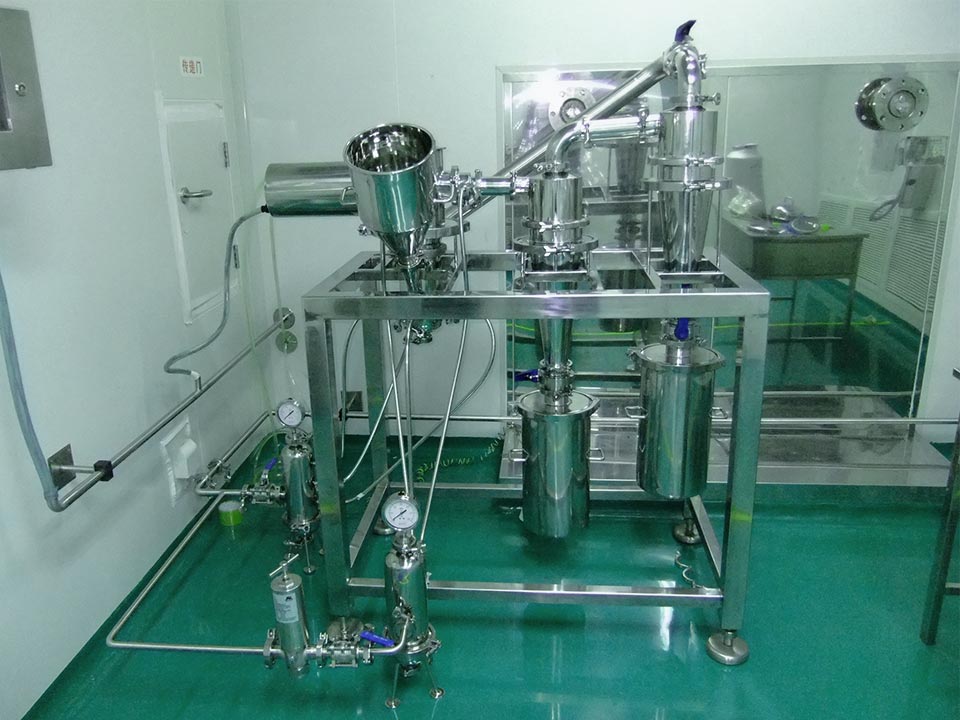
- Technical Features
Fast speed and low temperature grinding: The ultra-fine grinding technology uses supersonic jet grinding, cold slurry grinding and other methods, which is completely different from the previous pure mechanical grinding methods. There will be no local overheating during the grinding process, and it can even be ground at a low temperature. The speed is fast and can be completed in an instant, so the biologically active ingredients of the powder are retained to the greatest extent, so as to facilitate the production of the required high-quality products .
Fine particle size and uniform distribution: Due to the use of supersonic airflow grinding, the distribution of forces acting on the raw materials is quite uniform. The setting of the classification system not only strictly restricts large particles, but also avoids over-grinding, and obtains ultra-fine powder with uniform particle size distribution. At the same time, the specific surface area of the powder is greatly increased, so that the adsorption and solubility are correspondingly increased. .
Save raw materials and improve utilization: After the object is ultra-finely ground, the ultra-fine powder with a near nanometer particle size can generally be directly used in the production of preparations, while the products of conventional grinding still need some intermediate links to meet the requirements of direct use and production , This is likely to cause waste of raw materials. Therefore, this technology is especially suitable for grinding precious and rare raw materials.
Reduce pollution: Ultra-fine grinding is carried out in a closed system, which not only avoids the pollution of the surrounding environment by micro-powder, but also prevents dust in the air from polluting the product. Therefore, by using this technology in food and medical health products, the microbial content and dust can be effectively controlled.
- Grinding method
Grinding medium grinding: Grinding medium grinding is the process of grinding material particles by means of the impact generated by the moving grinding medium (grinding medium) and the non-impact bending, squeezing and shearing forces. The grinding media pulverization process is mainly grinding and friction, namely extrusion and shearing. Its effect depends on the size, shape, ratio, movement mode, filling rate of the material, and the mechanical characteristics of the grinding of the material. There are three types of typical media grinding equipment: ball mill, stirring mill and vibration mill.
The ball mill is a traditional equipment used for ultra-fine grinding, and the product size can reach 20-40 microns. When the particle size of the product is required to be below 20 microns, the efficiency is low, the energy consumption is large, and the processing time is long. Stirring mill is developed on the basis of ball mill, mainly composed of grinding container, agitator, disperser, separator and feed pump. When working, under the action of centrifugal force generated by the high-speed rotation of the disperser, the grinding medium and the particle slurry produce impact shearing, friction and squeezing to grind the particles. The stirring mill can achieve ultra-micronization and homogenization of product particles, and the average particle size of the finished product can reach a few microns at least. Vibration mill is to grind particles by using the effects of impact shear, friction and extrusion produced by high-frequency vibration of the grinding medium. The average particle size of the finished product can reach 2-3 microns or less, and the pulverization efficiency is much higher than that of the ball mill. The processing capacity is more than 10 times that of a ball mill with the same capacity.
Airflow ultra-fine grinding: The jet mill can be used for ultrafine grinding. It uses compressed air or superheated steam, and the supersonic high turbulent airflow generated by the nozzle as the carrier of the particles, and the impact backlog occurs between the particles or between the particles and the fixed plate , Friction and shearing, etc., so as to achieve the purpose of grinding. There are six major types of airflow stainless steel grinders: disc type, circulating tube type, target type, collision type, rotary impact type, and fluidized bed type. Compared with ordinary mechanical ultra-fine stainless steel pulverizer, the airflow stainless steel pulverizer can grind the product very fine (the fineness of the powder can reach 2-40 microns), and the particle size distribution range is narrower, that is, the particle size is more uniform. Because the gas expands at the nozzle to reduce the temperature, there is no accompanying heat during the grinding process, so the grinding temperature rise is very low. This feature is particularly important for ultra-fine grinding of low-melting and heat-sensitive materials. However, the energy consumption of air jet grinding is large, and the energy utilization rate is only about 2%, which is several times higher than other grinding methods.
It is worth pointing out that it is generally believed that the particle size of the product is directly proportional to the feeding speed, that is, the larger the feeding speed, the larger the product particle size. This understanding is not comprehensive. This statement is reasonable when the feeding speed or the particle concentration in the stainless steel pulverizer reaches a certain value. Because the feeding speed increases, the particle concentration in the stainless steel pulverizer also increases, and particle crowding occurs. Even the particles flow like a plunger. Only the particles at the front of the "plunger" have the possibility of effective collision. The particles only collide and rub each other at a low speed, and generate heat. However, this does not mean that the smaller the particle concentration, the smaller the product size, or the higher the grinding efficiency. On the contrary, when the particle concentration is low to a certain level, there will be no chance of collision between the particles and the grinding efficiency will be reduced.
What are the factors that affect the grinding efficiency of jet mills?
Jet mill is a kind of equipment that uses high-speed air flow energy (300~500m/s) or superheated steam (300~400℃) to make powders collide, collide, and rub against each other to make them grind. The nozzle sprays high-pressure air or high-pressure hot air, and then rapidly expands to form a high-speed airflow. Due to the large velocity gradient near the nozzle, most of the grinding occurs near the nozzle. The collision frequency between particles in the grinding chamber is much higher than the collision frequency between particles and the wall, that is, the main function of the jet mill is the collision between particles.
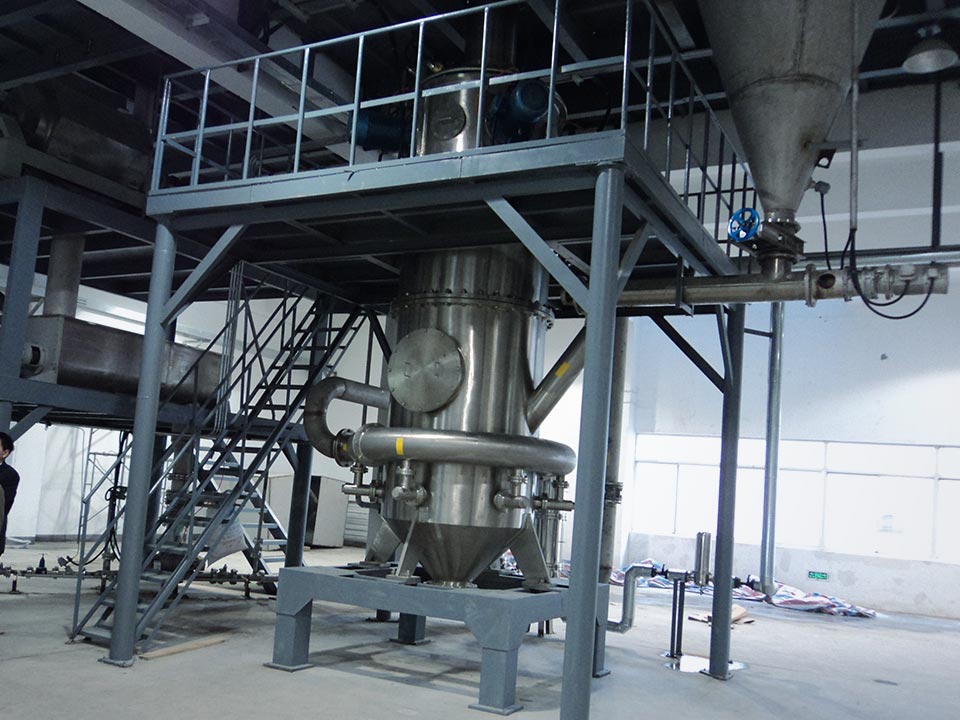
The control of the final particle size of the product by the jet mill mainly depends on the raw material particle size, crushing pressure, feeding pressure, feeding speed and other parameters. The logical relationship between the pneumatic grinding device and these parameters is specifically: the smaller the particle size of the raw material, the higher the grinding efficiency, on the contrary, the larger the particle size, the lower the grinding effect. When the grinding pressure and feed pressure are constant, reducing the feed rate will make the product finer, and increasing the feed rate will make the product coarser. When the feed rate is constant, increase the grinding pressure, the product size will become finer, and reduce the grinding pressure, the product will become coarser.
Therefore, particle size control is achieved by adjusting the parameters in the grinding process of the jet mill to achieve different pulverization finenesses. Before pulverization, the relationship between the feeding speed and pressure must be determined first, and then the appropriate pulverization parameters must be determined to meet different requirements. Granularity requirements.
The advantage of the jet mill is that it grinds no pollutants. After grinding, the compressed supersonic airflow speed decreases and the volume increases. It is an endothermic process and has a cooling effect on the material. It is especially suitable for ultrafine grinding. The jet mill uses supersonic airflow to accelerate the speed of particles, collide with each other or grind materials to achieve the grinding effect.
In order to increase the collision speed, a number of evenly distributed sub-nozzles are set around the main nozzle to accelerate the material particles around the main nozzle into the central area of the main stream. The feed nozzle is located in the center of the main nozzle, and the fluidized particles can be directly sucked into the center of the main nozzle to achieve a higher collision velocity.
At present, the jet milling equipment used in industry includes: flat plate, circulating tube, target type, convection type, fluidized bed type.
Influencing factors of the grinding effect of jet mill
Research results show that the grinding effect of the jet mill is affected by factors such as gas-solid ratio, feed particle size, working fluid temperature, and working fluid pressure.
- Gas-solid ratio
If the gas-solid ratio is too small, the gas flow energy will be insufficient, which will affect the fineness of the product; on the contrary, if the gas-solid ratio is too large, it will not only waste energy, but also deteriorate the dispersion performance of certain materials.
- Feed size
When grinding hard materials, the particle size requirements of the feed materials are also stricter. For titanium powder, the crushed calcined material should be controlled at 100~200 mesh; the surface treatment material grinding is generally 40~70 mesh, not more than 2~5 mesh.
- Working fluid temperature
At high temperatures, the gas flow rate in the working fluid increases. Take air as an example. The critical velocity at room temperature is 320m/s. When the temperature rises to 480℃, the critical velocity can be increased to 500m/s, and the kinetic energy is also increased by 150%. The effect is favorable.
- Pressure of work material
The working hydraulic pressure is the main parameter that produces the jet flow rate and affects the grinding fineness. Generally speaking, the higher the working pressure and the faster the working speed, the greater the kinetic energy, which mainly depends on the grindability and fineness requirements of the material.
- Grinding aids
During the grinding process of the jet mill, if a suitable grinding aid is added, not only the grinding efficiency can be improved, but also the dispersibility of the product in the medium can be improved.
The principle of daily maintenance of ball mill
Ball mills can play a greater role in industrial production only after good daily maintenance.
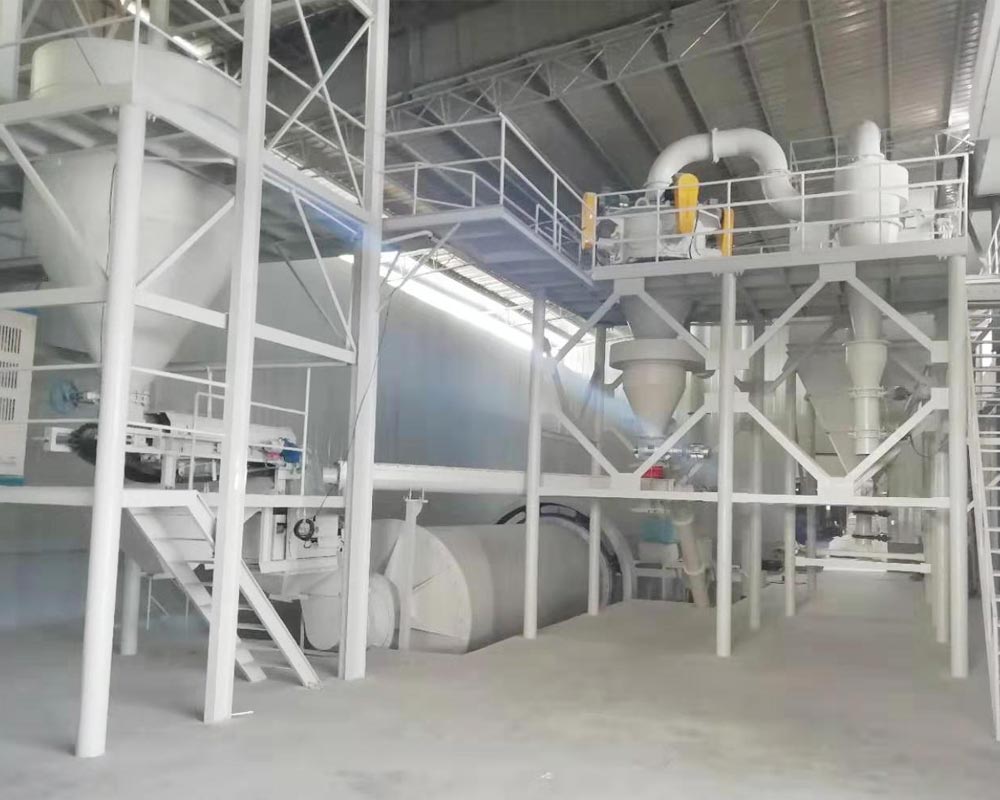
1. All lubricating oil should be discharged when the mill is put into continuous operation for one month, thoroughly cleaned, and replaced with new oil. In the future, the oil change will be carried out approximately every 6 months in conjunction with the middle repair.
2. The lubrication condition and oil level of each lubrication point are checked at least every 4 hours.
3. When the mill is running, the temperature of the main bearing lubricating oil should be lower than 55°C.
4. When the mill is running normally, the temperature rise of the transmission bearing and reducer should not exceed 60℃, and the high temperature should be lower than 70℃.
5. The large and small gears drive smoothly without abnormal noise.
6. The ball mill runs smoothly without strong vibration.
7. Check the motor current from time to time for no abnormal fluctuations.
8. During routine maintenance, ensure that the connecting fasteners are not loose, and there is no oil leakage or water leakage on the joint surface.
9. The wear condition of the steel ball should be added in time.
10. If an abnormal situation is found, the grinding should be stopped immediately for maintenance.
11. The mill liner should be replaced when it is 70% worn or there are 70mm long cracks.
12. When the liner bolts are damaged and the liner becomes loose, replace it.
13. Check that the main bearing should be replaced when it is severely worn.
These maintenance principles seem cumbersome, but in fact the operation is very simple. As long as the production of the ball mill is treated seriously and carefully, and the daily maintenance is done, the economic benefits that the ball mill can bring will be huge.
How to solve the sudden failure of the ball mill
Ball mill equipment is the equipment that accounts for a considerable investment in the entire concentrator, accounting for more than 50%. Therefore, ensuring the normal operation of the ball mill is a necessary condition to ensure the normal production of the entire concentrator. However, when the ball mill is in use, some sudden failures often occur, which affects production efficiency. So how to effectively solve or avoid these sudden failures?
Sudden failures of ball mills are generally caused by multiple reasons such as long-term high-speed operation and improper operation.
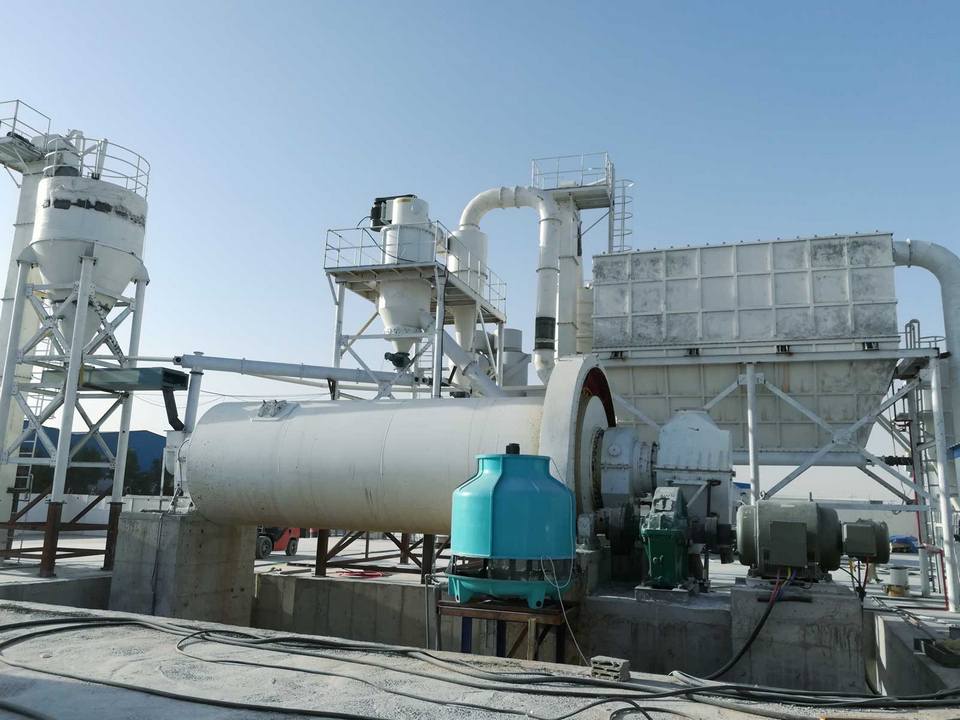
- The stator coil of the ball mill is broken down
In the entire system of the ball mill, there will be iron-containing dust in the air around the material. After a long time of operation, the iron-containing dust will adhere to the coil of the ball mill stator. When it reaches a certain thickness, it will cause the surface of the stator coil. A short-circuit discharge situation has occurred. When the short-circuit phenomenon occurs many times, the insulator of the coil will be damaged, causing the phenomenon of sparking and breakdown, causing the ball mill to stop running. Without a backup motor, the grinding work is difficult to continue. At this point, the breakdown coil should be cut off immediately, scientific protection measures should be adopted, and the ball mill can be restarted to continue production.
- The sliding shaft of the ball mill is scratched
After the sliding shaft of the ball mill has been worn for a long time and reaches a certain thickness, it is difficult to combine the spherical body of the ball mill with the tile lining, and scratches will occur. Generally, this kind of situation occurs because the clinker temperature of the hollow shaft is too high, and the temperature of the outer surface of the hollow shaft is also high, which causes the lubricating oil to be too diluted, loses viscosity, and is difficult to form a good oil film, resulting in bushings and journals. Friction generates heat and heats up rapidly, causing the surface of the tile lining to be melted and scratched.
If there is no spare spherical tile-hour, you can only stop the machine for inspection and repair the tile surface before continuing to use it. The smoothness of the scratched surface can be restored by frustrating, cutting, grinding, etc., while the undamaged part needs to be scraped out of a micro oil groove to repair the tile. And unload the materials and grinding media in the ball mill, and use manual methods to rotate the barrel for no-load grinding. When it reaches a certain level, it will run in conjunction with the transmission part for a no-load test, and then load the materials and grinding media into the ball mill for load operation, so that the ball mill can return to normal operation.
- The barrel screw and hollow shaft of the ball mill are broken
In the process of connecting the cylinder body and the hollow shaft of the ball mill, the cylinder body needs to be drilled through holes with the flange, and the pins are connected through the turnbuckles. The through holes only need ordinary screws to connect. The reamed holes are mainly used for limiting and Positioning role.
After long-term operation of the ball mill, due to thermal expansion and contraction, distortion, high temperature corrosion, water vapor corrosion, etc., the matching size of the pin hole and the reamed hole will change, and the phenomenon of looseness will occur, which makes it difficult to achieve position limitation. Because of the twisting, the screw starts to loosen, causing the cylinder and the hollow shaft to periodically displace. If the screw is stretched for a long time, the screw will break.
According to many years of experience, after this kind of failure occurs, the screw can be changed to a hinge pin for connection. At present, there has been no phenomenon of hinge pin fracture.
- The temperature rise of the sliding bearing of the ball mill
During the operation of the ball mill, the base part of its head slides and the temperature of the bearing suddenly rises. This phenomenon is mostly caused by the sinking of the base part of the head, the overall movement of the grinding body and the tilting. The spherical bush shoulder of the ball mill and the flange root of the hollow shaft undergo squeezing contact and rotating friction, which generates heat and causes the temperature to rise rapidly. high. This situation may cause the ball mill to tilt. The meshing of the large ring gear and the pinion gear will form an axial angle, which will cut the teeth each other, which will increase the difficulty of meshing, cause loud noise and increase the vibration, and will cause the ball mill to stop in severe cases.
After this phenomenon occurs, it is necessary to stop the machine for inspection, weld and lengthen the grounding bolts, wedge the shim iron, raise the bearing seat, and control the temperature of the sliding bearing and the sound of the transmission part.
Wide range of product applications for air classifiers
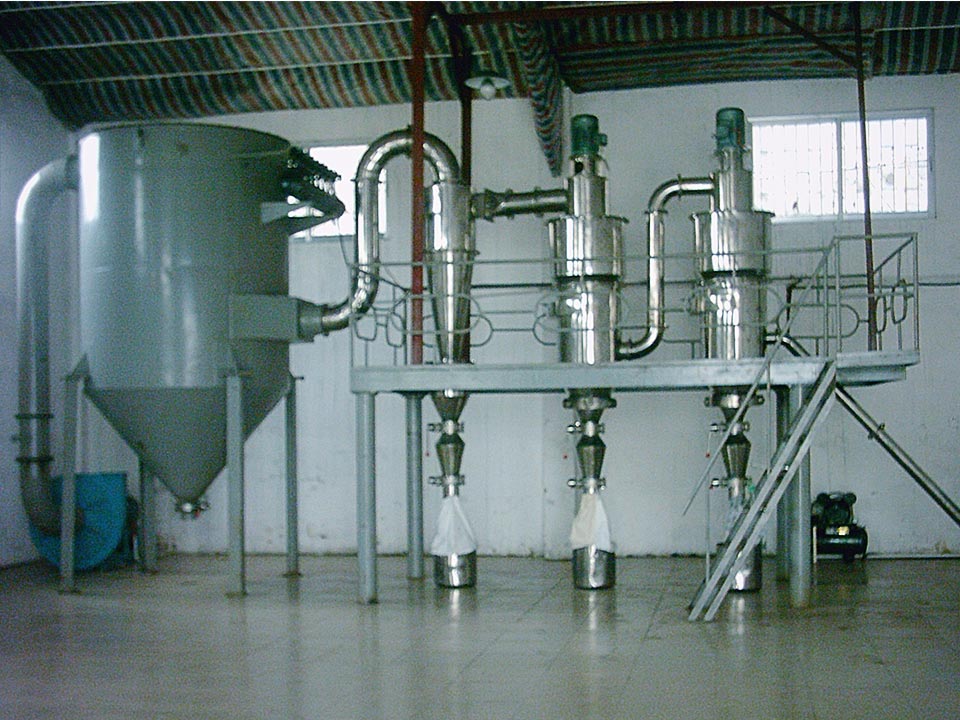
Features of Air Classifier:
1. Large output, low energy consumption and high grading efficiency.
2. Concentration of particle size: The machine uses an original vertical impeller for classification. The stable classification technology and special sealing measures effectively prevent the leakage of coarse particles, so that the product has no large particles, centralized particle size and high classification accuracy.
3. Reasonable structure: products with 1-6 particle sizes can be produced at the same time according to user requirements.
4. Strong applicability: It can be combined with various mills (jet mill, mechanical mill, ball mill, Raymond mill, vibration mill, etc.) to form a closed-circuit or open-circuit combined operation.
5. High degree of automation.
Working principle of air classifier:
Qualified fine powder is carried by the updraft into the turbo classifier above the fluidized bed. The classifier classifies qualified materials and enters the cyclone collector (if products with several particle sizes are required, multiple vertical turbines are added Classifier). The finer tail material is carried by the airflow into the bag filter. After being filtered by the bag, the tail material enters the discharge port at the lower part of the dust collector, and the pure air is emptied.
The main components of the machine: the standard configuration is a vertical turbine classifier. The crushing and classification are coordinated and completed synchronously. The speed of the classifier can be adjusted by frequency conversion, and the product fineness can be adjusted arbitrarily. If a processing process requires products with multiple granularities, two to four can be installed on the basis of a standard classifier to make this machine a two-connected-five-connected crushing and grading machine.
Application range: The crushing mechanism of this machine determines its wide application range and high fineness of the finished product. Typical materials include: superhard diamond, silicon carbide, metal powder, etc., high purity requirements: ceramic pigments, medicine, biochemical Etc. Low temperature requirements: medicine, PVC. By changing the ordinary air in the air source to inert gases such as nitrogen and carbon dioxide, the machine can be used as an inert gas protection device, suitable for the crushing and classification of inflammable, explosive, and oxidizable materials.
Airflow classifier product application:
1. High hardness materials: silicon carbide, various corundum, boron carbide, alumina, zirconia, garnet, zircon sand, diamond, etc.
2. Non-metallic minerals: quartz, graphite, kaolin, calcium carbonate, mica, barite, mullite, medical stone, wollastonite, talc, pyrophyllite, etc.
3. Chemical industry: aluminum hydroxide, silica gel, various dyes, epoxy resin, various additives, etc.
4. Food and medicine: pollen, hawthorn, pearl powder, Ganoderma lucidum, various vegetable powder, various Chinese herbal medicines, various health products, cosmetics, antibiotics, etc.
5. Metal materials: aluminum powder, magnesium powder, zinc powder, tin powder, copper powder, etc.
6. Other materials: ceramic materials, refractory materials, electronic materials, magnetic materials, rare earth materials, phosphors, copy material powders, etc.
Ultra-fine grinder operating instructions & output & fineness adjustment methods
Ultra-fine grinder is a kind of fine powder and ultra-fine powder grinding and processing equipment. This equipment is mainly suitable for non-flammable and explosive non-metallic materials with medium and low hardness, humidity less than 6%, and Mohs hardness below 9 .
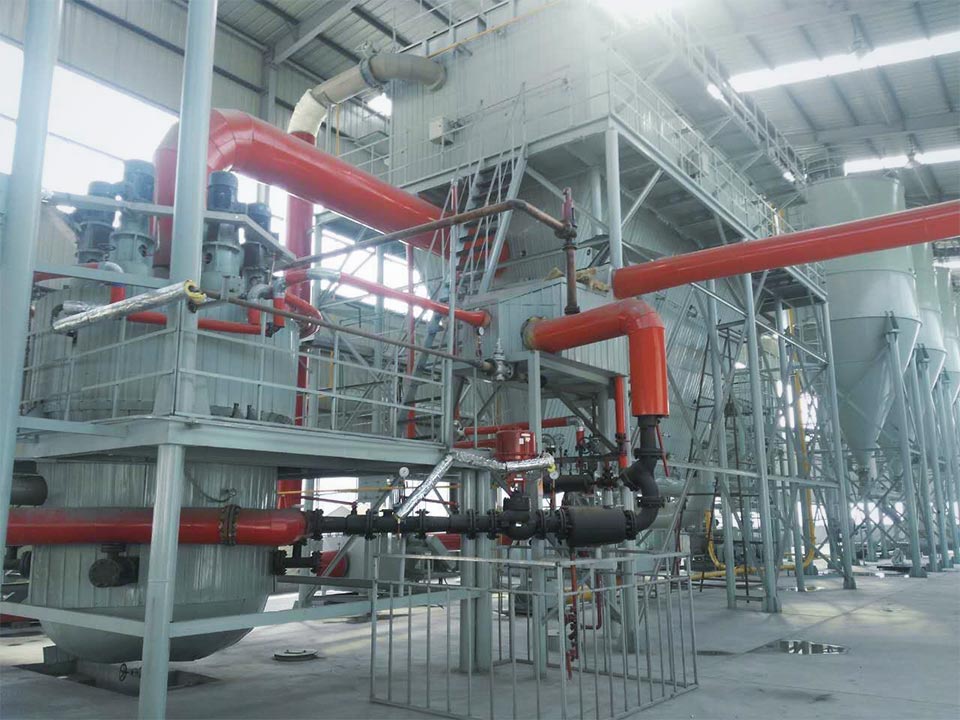
- Operation instructions
(1) Turn on sequence ---- turn on the auxiliary equipment first (high-voltage extension, high square screen, pulse dust collector, wind shutoff, screw auger, scraper and hoist).
(2) Open the host supporting equipment (grading wheel, host, feeder). Remarks: Before turning on the feeder, the frequency of the grading wheel must be set first. The purpose is to prevent the grinding material from being too coarse or too fine.
- Fineness adjustment method
(1) Under normal working conditions, the factors that affect the fineness are the air volume, the speed of the grading wheel and the feeding volume, and the degree of wear of the wearing parts.
(2) When the fineness is too thick: if the air volume is the maximum, first reduce the feed volume, and then increase the frequency of the grading wheel; if it still does not meet the requirements, turn off the small air volume (butterfly valve on the high-pressure air pipe). Such repeated adjustments to find and meet the fineness requirements are the control points for the best yield.
(3) When the fineness is too fine: first increase the air volume, if the air volume is the largest, reduce the frequency of the grading wheel and increase the feeding volume after the current drops. Such repeated adjustments to find and meet the fineness requirements are the control points for the best yield.
(4) If low-grade feed is produced, the requirement for fineness is not high, and when only the output is pursued, the air volume should be maximized, the frequency of the grading wheel should be reduced, and the feed volume should be increased.
- Wearable parts and names that affect output and fineness
(1) Hammer: After the material enters the grinding chamber, the hammer is mainly used to make the material thinner. Severe wear of the hammer head will result in a decrease in output and fineness, uneven wear and increase in vibration, which will affect the service life of the main engine bearing.
(2) Ring gear: After being hit by the hammer, the material will bounce back to the ring gear, forming a second hit, and the crushing requirements can only be reached after repeated such repetition. The wear of the ring gear will greatly affect the output and fineness.
(3) Wear plate: Wear plate is the most easily worn object. Wear plate is an important part to protect the active disk. Excessive wear of the wear plate will increase the vibration and affect the service life of the main engine bearing. After being worn through, the active disc will be directly worn, which will increase the cost of accessories and cause the equipment to operate in a dangerous state.
(4) Shunt cover: After the shunt cover is worn, it will change the flow direction of the airflow in the crushing chamber, causing the fineness of the material to fail to meet the requirements.
(5) Active disk: The wear of the active disk (replacement of the wear plate in time will effectively protect the active disk) will cause vibration and affect the service life of the host bearing.
How to solve the problem of excessive dust when the jet mill is working
The jet mill, cyclone separator, dust collector, and induced draft fan constitute a complete pulverization system. After the compressed air is filtered and dried, it is sprayed into the crushing chamber at high speed through the Laval nozzle. At the intersection of multiple high-pressure airflows, the materials are repeatedly collided, rubbed, and sheared to be crushed. The crushed materials rise with the suction of the fan. The air flow moves to the classification zone, and the coarse and fine materials are separated under the strong centrifugal force generated by the high-speed rotating classification turbine. The fine particles that meet the particle size requirements enter the cyclone separator and dust collector through the classification wheel for collection, and the coarse particles descend to the grinding zone to continue grinding .
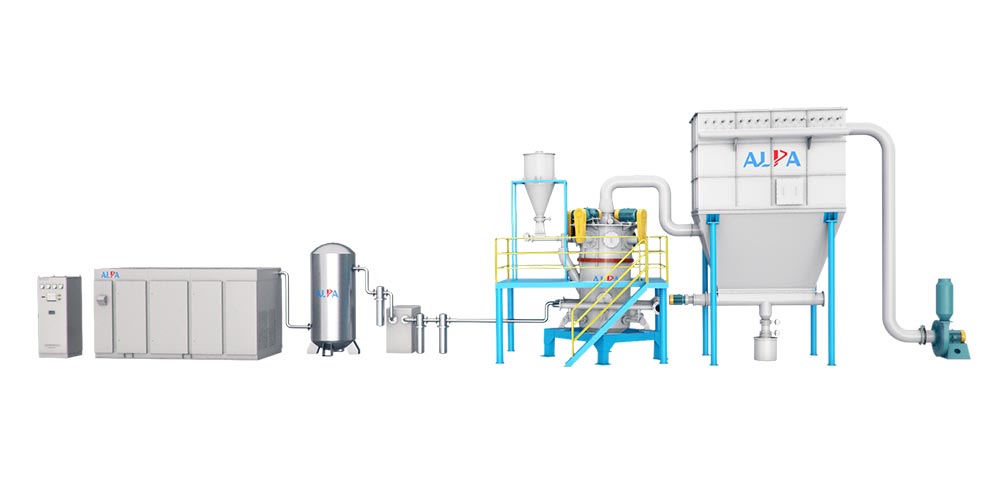
Sometimes the difference in operation mode and settings will make the crusher's crushing effect poor. Whether it is to increase the speed of the extension or set the parameters, it will not achieve good results. So what to do in this situation, let me tell you about it below. Ways to improve the crushing effect.
To increase the feed rate, the principle of airflow pulverization mainly relies on the high-speed airflow to cause strong collisions between the material and the material, and the material and the inner wall to achieve the pulverization effect. If the feed is too little, the purpose of frequent and strong collisions cannot be achieved, so that the strength cannot be lowered. In addition, if the fan damper is too large, the internal negative pressure will be too large and the collision will be reduced; on the contrary, the positive pressure is not good.
The jet mill is used to crush materials, so the crushed materials and tailings must be discharged in time. When the crusher discharges these crushed materials, there will be dust. So how to solve if the dust is too large?
- Install the dust collector: Generally, this type of dust collector can be used with a grinder. It collects the dust in the collection bag, and the dust is filtered and discharged from the dust box through the cloth bag;
- The cloth bag is dustproof: the cloth bag is tightly tied to the powder outlet of the machine to prevent air leakage and powder leakage. Attention should be paid during operation: the powder outlet should be blocked when parking, and the dust should be cleaned up in time.
- Dust removal by wood shower or pool: Mainly use a ventilator to vacuum to the outside of the grinding room, and then use a spray to vacuum, or use a pool to vacuum, etc.
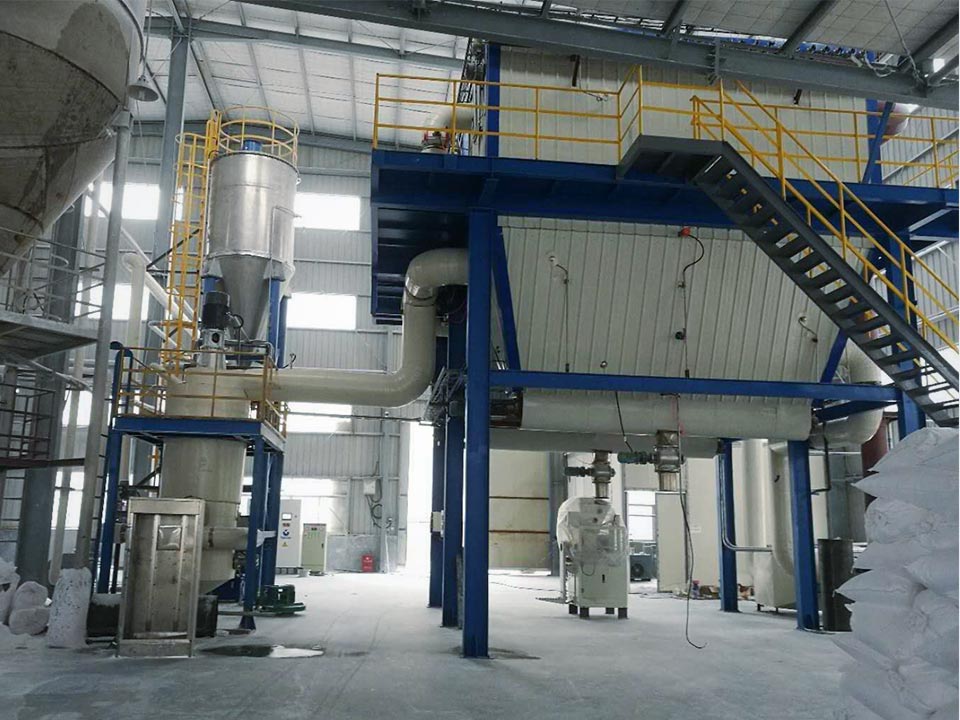
The above three dust removal methods can achieve good dust removal effects and can solve the problem of excessive dust. Generally, these dust removal devices are installed before work to prevent excessive dust.
What are the factors that affect the output and quality of the ball mill?
The beneficiation stage is mainly divided into three stages: pre-selection, separation and post-selection. Grinding is in the pre-selection stage. Therefore, the output of the ball mill has a certain degree of influence on the mineral separation effect, and even the recovery rate and concentrate grade. Therefore, how to ensure the output of the ball mill has become a topic of concern, so what are the reasons that affect the output of the ball mill?
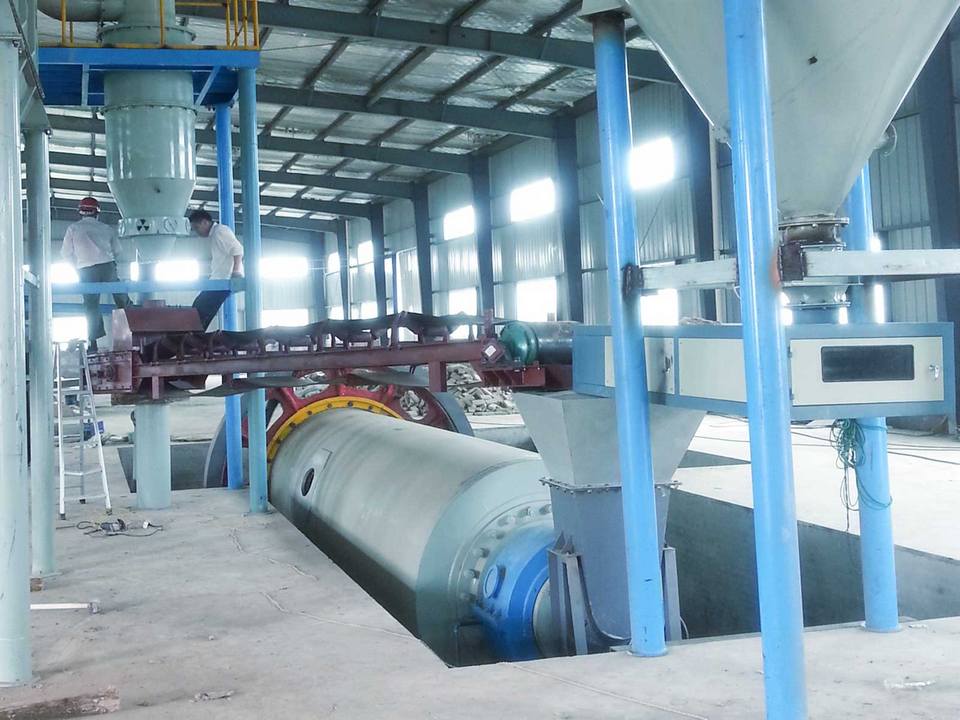
- Raw material size
The particle size of the raw material affects the output and quality of the ball mill. If the particle size is small, the output and quality of the ball mill will be high, and the power consumption will be low; if the particle size is large, the output and quality of the mill will be low, and the power consumption will be high.
- Material ease of grinding
The grindability of the material refers to the degree of difficulty of the material in the grinding process. According to the national standard, the grindability index wi (kWh / T) is adopted. The smaller the value, the better the grind, otherwise the harder it is to grind.
- The water content of the material to be ground
The grinding of the ball mill can be divided into two methods: dry and wet. For dry milling, the water content of the abrasive has a great influence on the output and quality of the mill. The higher the water content of the abrasive material, the more likely it is to cause full grinding or paste grinding, reducing the grinding efficiency, and the lower the output of the grinding machine. Therefore, materials with higher moisture must be dried before grinding.
- Feed temperature
If the temperature of the material entering the mill is too high, the impact friction of the grinding body will be generated. If the temperature in the mill is too high, the ball will stick, which will reduce the grinding efficiency of the mill and affect the output of the mill. At the same time, the thermal expansion of the rolling mill barrel affects the long-term safe operation of the rolling mill. Therefore, it is necessary to strictly control the temperature of the material being ground.
- The fineness requirements of the grinding material
The finer the requirements for fineness, the lower the output, and vice versa, the higher the output. In some areas, excessive emphasis on fineness does not meet the requirements of economic production. For example, in the cement industry, actual production shows that when the product fineness is in the range of 5-10%, the fineness is reduced by 2%, and the output will be reduced by 5%. When the fineness is controlled below 5%, the output of the mill will decrease even more. Therefore, choosing the right product fineness is also an important factor to improve the output and quality of the ball mill.
- Grinding process
For ball mills of the same specifications, the closed-circuit process can increase the output by 15-20% compared with the open-circuit process; in closed-circuit operation, selecting the appropriate separation efficiency and cycle load rate is an important factor in increasing the output of the mill.
- Powder selection efficiency
The sorting efficiency of the closed-circuit crusher has a great influence on the output of the crusher. Generally speaking, the efficiency of the classifier is higher, which can improve the grinding efficiency of the mill. However, the classifier itself cannot play the role of grinding, so the function of the classifier must be combined with the grinding function of the grinder to increase the output of the grinder. Production practice shows that the efficiency of the one-stage closed-circuit long grinding separator is generally controlled at 50 ~ 80%. The ideal separation efficiency should be determined through multiple experiments.
- Cycle load rate
Circulation load rate refers to the ratio of recycled powder (coarse powder) to finished product. In order to improve the grinding efficiency of the mill and reduce the phenomenon of over-grinding in the mill, the cycle load rate should be appropriately increased. However, if the circulating load rate is increased to a very high level, there will be too much material in the mill, thereby reducing the grinding efficiency.
- Add grinding aid
Some grinding aids will affect the grinding effect, because most of the organic substances of commonly used grinding aids have strong surface activity, which can accelerate the crack propagation of the material and reduce the amount of fine powder during the grinding process of the adsorbed material on the surface of the material. The mutual combination between the two improves the grinding efficiency, which is conducive to the energy-saving and high-yield of the ball mill.
- Ball to material ratio
The ball-to-material ratio is the ratio of the mass of the grinding body to the mass of the material. If the ball-to-battery ratio is too large, it will increase the useless work loss of the impact friction between the grinding body and the liner, increase power consumption and reduce output. How to choose the ball-to-battery ratio and ball-to-battery ratio of the ball mill is a common problem in actual production.
In addition to process factors, the model, parameters, and the work of production and maintenance personnel also affect the production and quality of the ball mill. The energy-saving and high-yield ball mill is a systematic project, and each link is interrelated and restricts each other. Only comprehensive consideration and close cooperation can achieve better energy-saving and high-yield effects.
How to deal with the blockage of jet mill
There are many grinders in our daily life, such as small grinders, Chinese medicine grinders, jet grinders, and so on. But in the process of use, sometimes there will be some failures, sometimes the grinder is blocked, when it is blocked, how should we deal with it? In fact, clogging is a very common failure of the grinder during grinding, and the main reason is still caused by the operation.
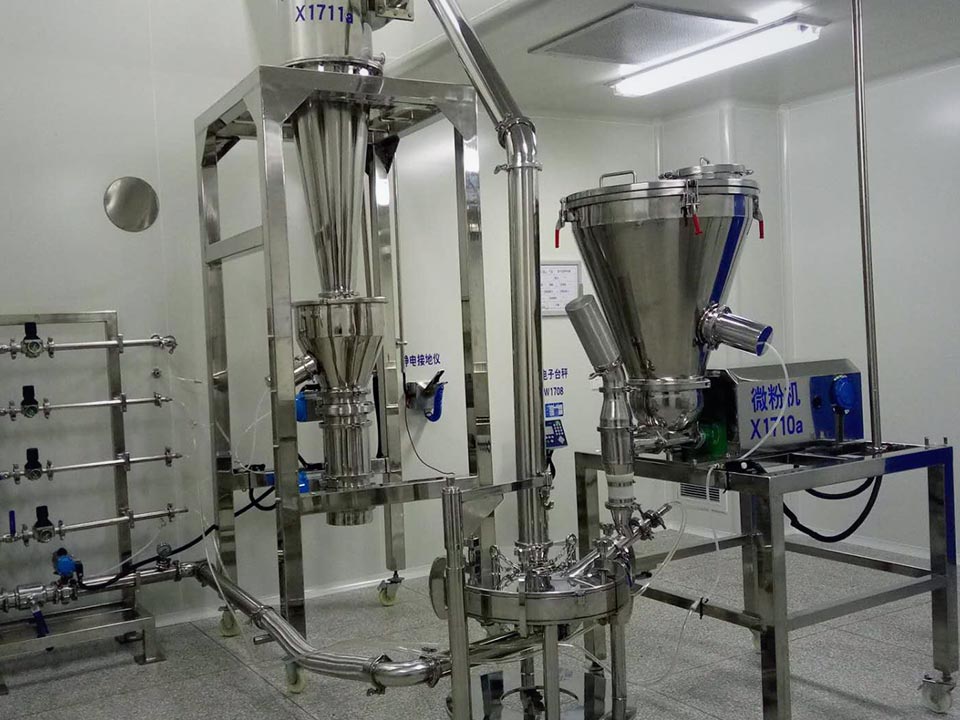
1. The feeding speed is too fast and the load increases, causing blockage. During the feeding process, you should always pay attention to the large deflection angle of the ammeter pointer. If it exceeds the rated current, it indicates that the motor is overloaded, and the motor will be burnt if overloaded for a long time. In this case, the feed door should be reduced or closed immediately, or the feeding method can be changed, and the feed amount can be controlled by increasing the feeder. There are two types of feeders: manual and automatic. The user should choose the appropriate feeder according to the actual situation. Due to the high speed of the grinder, the large load, and the strong fluctuation of the load. Therefore, the current when the grinder is working is generally controlled at about 85% of the rated current.
2. The discharging pipeline is not smooth or blocked and the feed is too fast, which will block the tuyere of the grinder; improper matching with the conveying equipment will cause the discharging pipeline to weaken or become blocked after no wind. After the fault is detected, the unmatched conveying equipment should be cleared first, and the feeding amount should be adjusted to make the equipment operate normally.
3. The broken or aging of the hammer, the closed or broken screen mesh, and the high water content of the ground material will cause the grinder to be blocked. The broken and severely aged hammers should be updated regularly, the grinder should be kept in good working condition, and the screen should be checked regularly. The water content of the ground material should be less than 14%, which can improve production efficiency, prevent the grinder from clogging, and enhance the reliability of the grinder.
These are the ways to deal with the clogging of the grinder. It is very common for the machine to malfunction. The most important thing is that we must know the way to solve the problem. This is a factor that makes the grinder longer service life. In addition, maintaining the machine is also very important.
